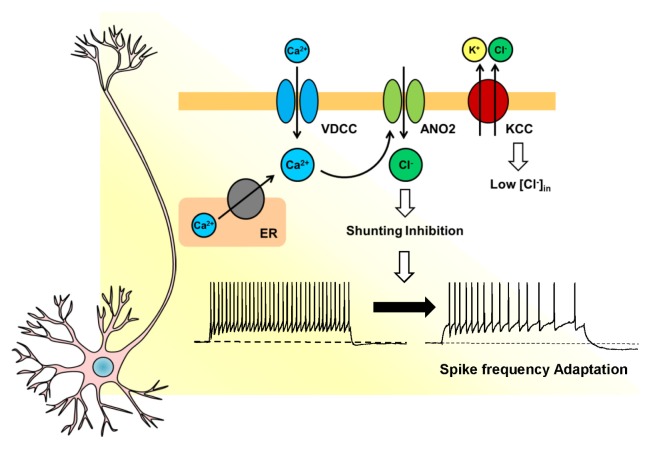Fig. 1.
Schematic representation of the cellular mechanisms of spike-frequency adaptation via ANO2 channel. The repetitive neuronal firing increases the intracellular Ca2+ level derived from influx through voltage-gated Ca2+ channels (VGCCs) and release from endoplasmic reticulum (ER)., which in turn activates ANO2 channels near the cell body of TC neurons. This inward Cl− flow due to low intracellular Cl− concentration generates hyperpolarization of neurons and modulate the spike-frequency adaptation via the shunting effect.

